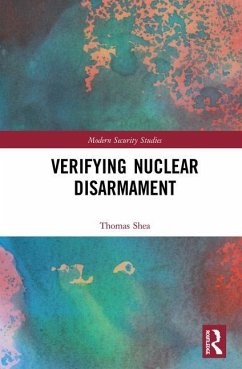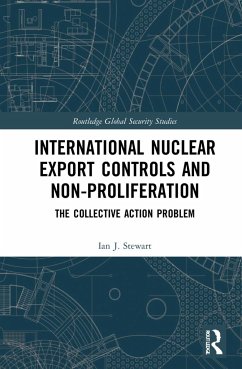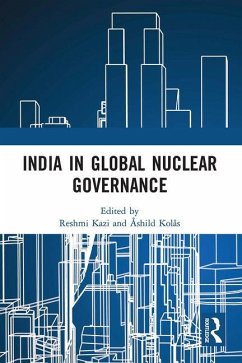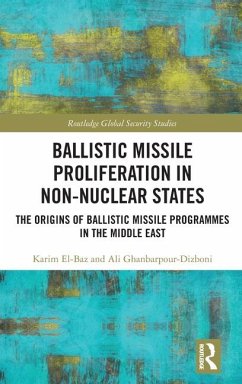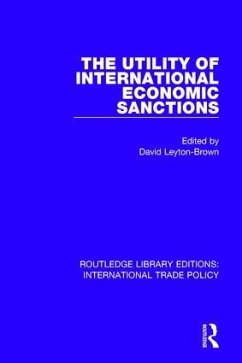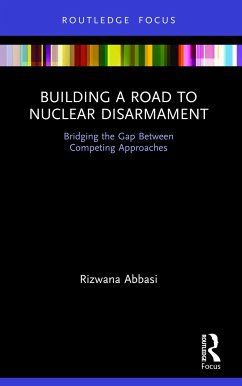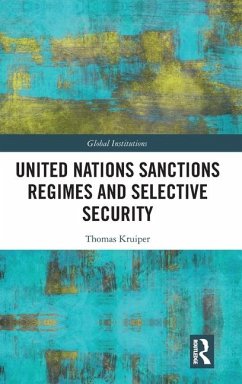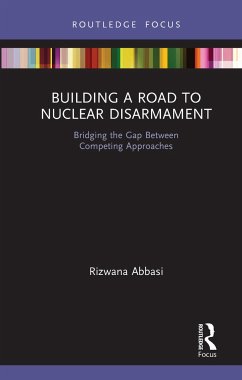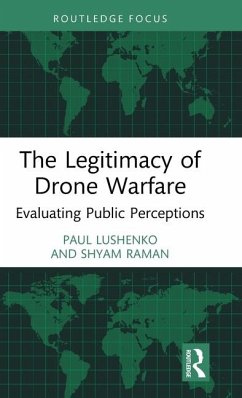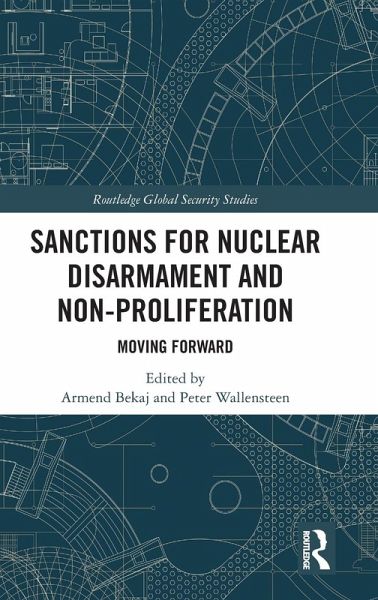
Sanctions for Nuclear Disarmament and Non-Proliferation
Moving Forward
Herausgegeben: Bekaj, Armend; Wallensteen, Peter
Versandkostenfrei!
Versandfertig in 6-10 Tagen
160,99 €
inkl. MwSt.
Weitere Ausgaben:

PAYBACK Punkte
80 °P sammeln!
This book examines the interplay between sanctions and nuclear disarmament and non-proliferation.The volume aims to tackle three separate but closely intertwined issues:It aims to revisit the debate on, and deconstruct the concept of, sanctions; to provide a working theoretical framework; to differentiate between positive sanctions (or incentives or carrots) and negative sanctions; to identify the actors who may initiate sanctions (i.e. states, regional, and/or international organizations); to ascertain the legality and legitimacy of such sanctions taking place; to problematize and discuss the...
This book examines the interplay between sanctions and nuclear disarmament and non-proliferation.
The volume aims to tackle three separate but closely intertwined issues:
It aims to revisit the debate on, and deconstruct the concept of, sanctions; to provide a working theoretical framework; to differentiate between positive sanctions (or incentives or carrots) and negative sanctions; to identify the actors who may initiate sanctions (i.e. states, regional, and/or international organizations); to ascertain the legality and legitimacy of such sanctions taking place; to problematize and discuss the utility of sanctions; and so on.It aims to disentangle the concepts of nuclear disarmament and non-proliferation, particularly in light of the most recent geopolitical global shifts on nuclear powers-interplay taking place in the background of the war in Ukraine and rising tensions in Southeast Asia, and so on.Finally, it aims to conjoin the cause-and-effect cases between the application of sanctions, on the one hand, and the decision by states to pursue nuclear disarmament and non-proliferation, on the other. By doing so, the volume helps to update and stimulate the academic and policy debate on the inter-relation between sanctions and nuclear disarmament and non-proliferation.
This book will be of much interest to students of nuclear non-proliferation, economic sanctions, security studies, and International Relations.
The volume aims to tackle three separate but closely intertwined issues:
It aims to revisit the debate on, and deconstruct the concept of, sanctions; to provide a working theoretical framework; to differentiate between positive sanctions (or incentives or carrots) and negative sanctions; to identify the actors who may initiate sanctions (i.e. states, regional, and/or international organizations); to ascertain the legality and legitimacy of such sanctions taking place; to problematize and discuss the utility of sanctions; and so on.It aims to disentangle the concepts of nuclear disarmament and non-proliferation, particularly in light of the most recent geopolitical global shifts on nuclear powers-interplay taking place in the background of the war in Ukraine and rising tensions in Southeast Asia, and so on.Finally, it aims to conjoin the cause-and-effect cases between the application of sanctions, on the one hand, and the decision by states to pursue nuclear disarmament and non-proliferation, on the other. By doing so, the volume helps to update and stimulate the academic and policy debate on the inter-relation between sanctions and nuclear disarmament and non-proliferation.
This book will be of much interest to students of nuclear non-proliferation, economic sanctions, security studies, and International Relations.




